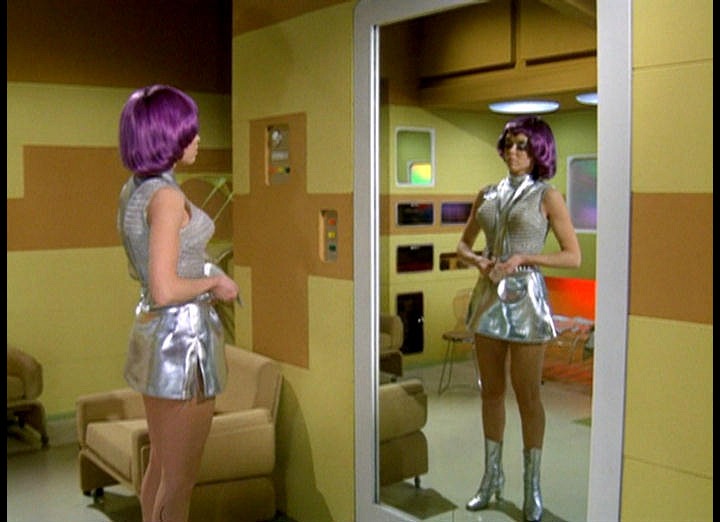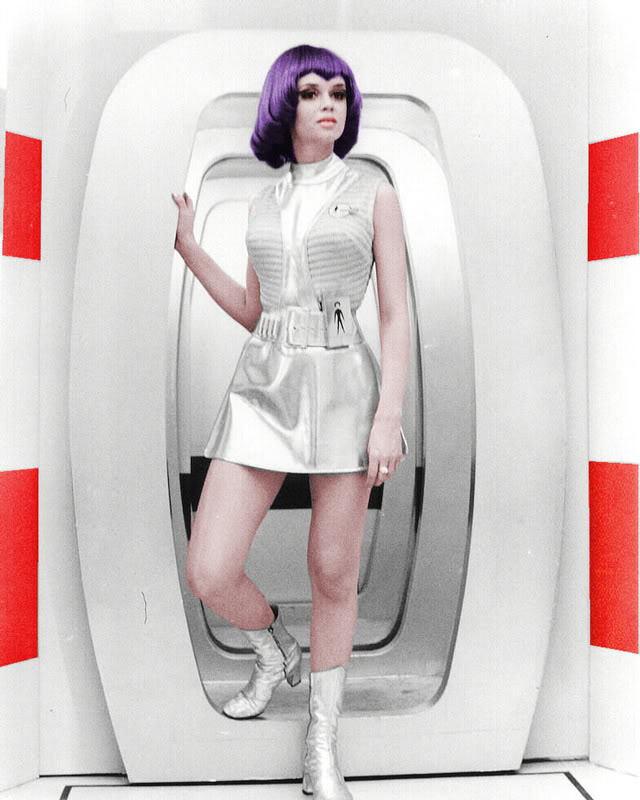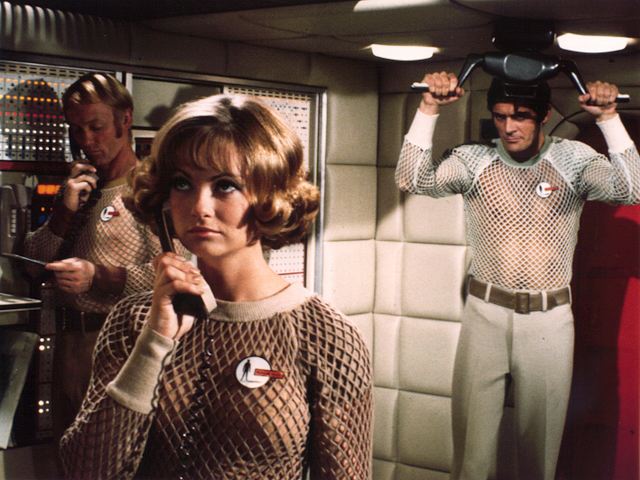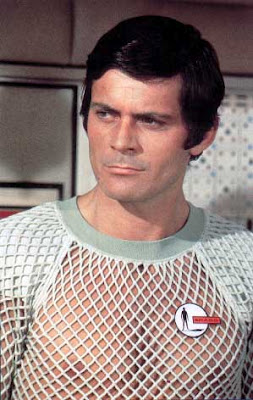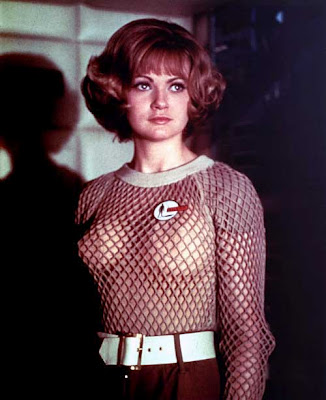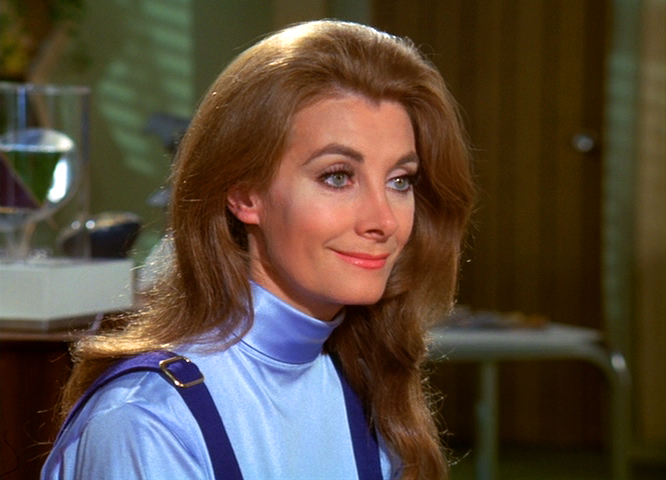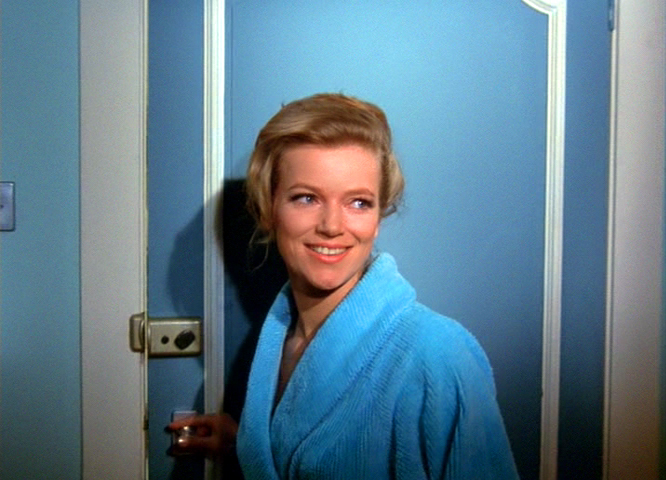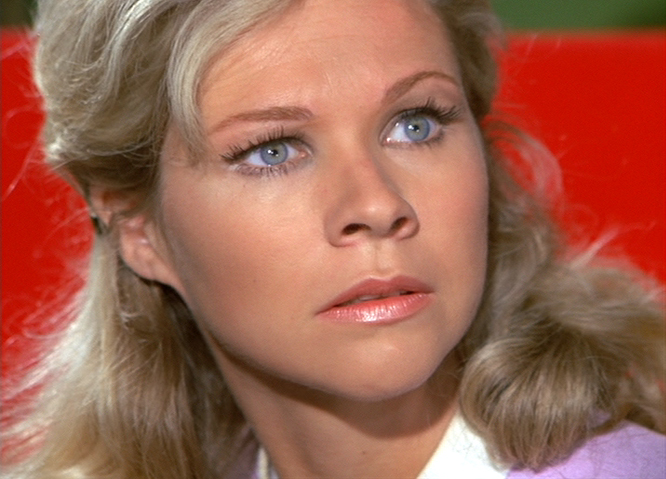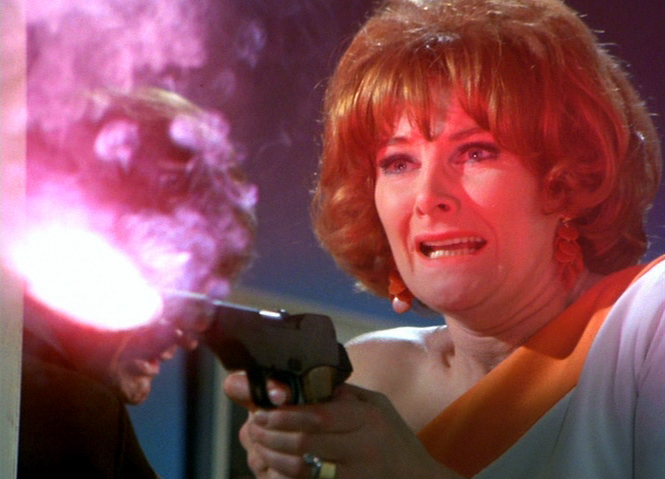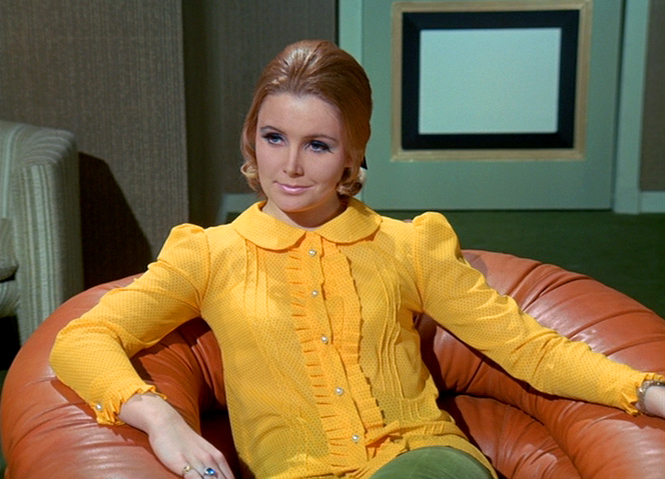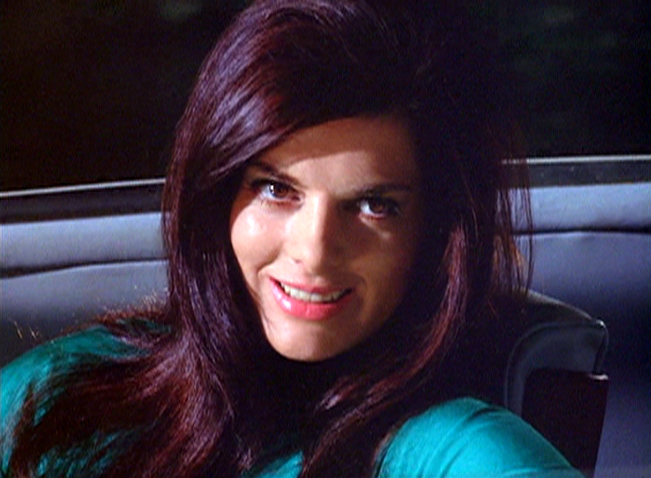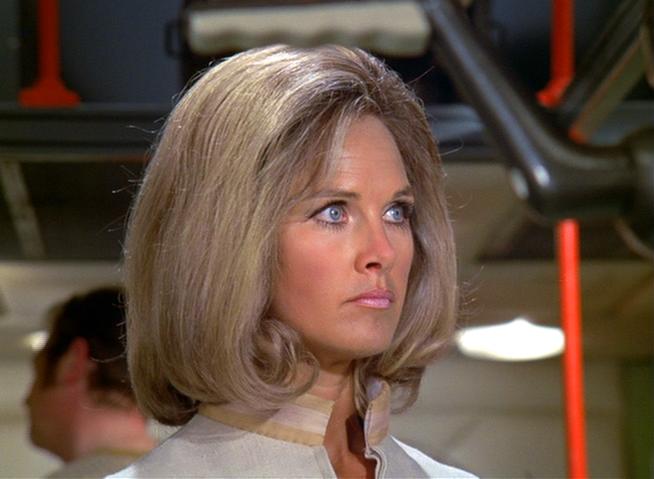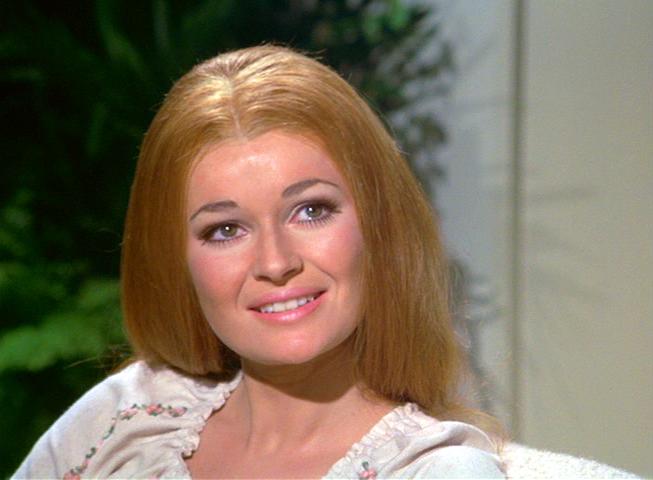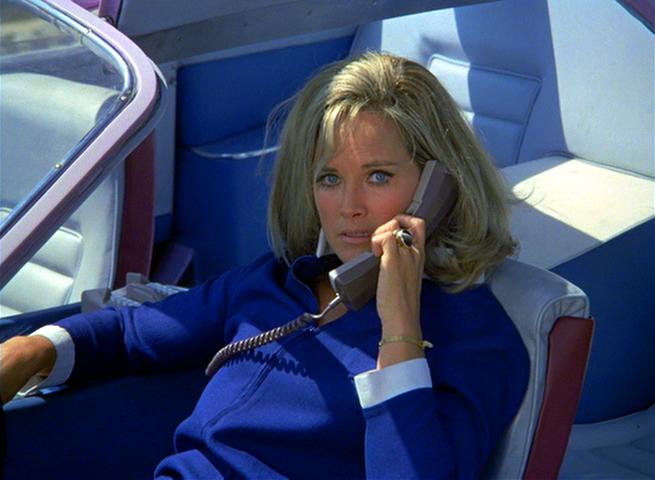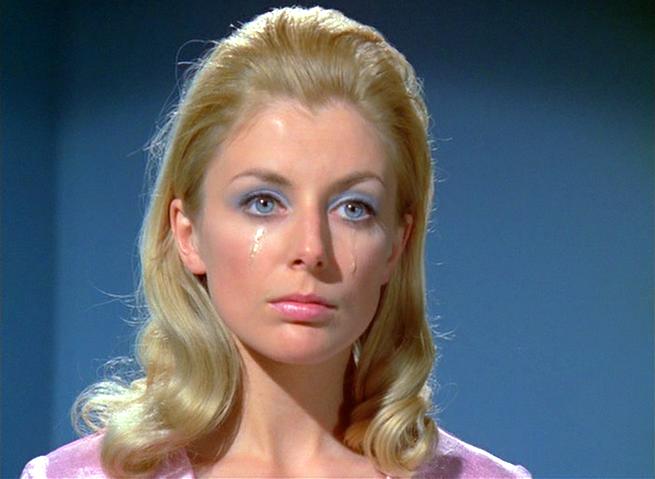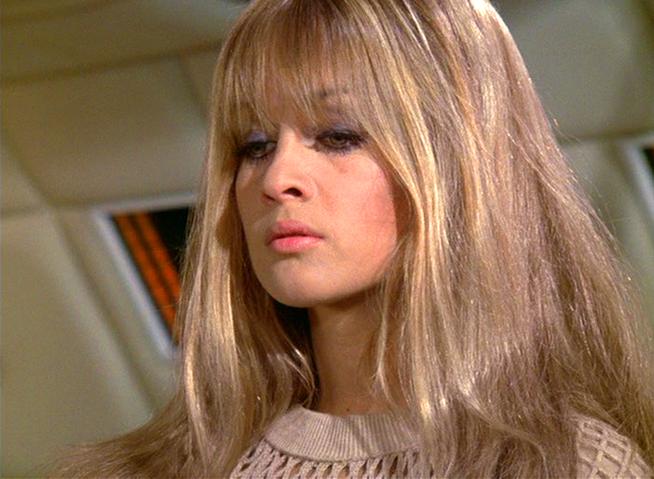|
|
||||||||||
|
Gerry Anderson
|
||||||||||
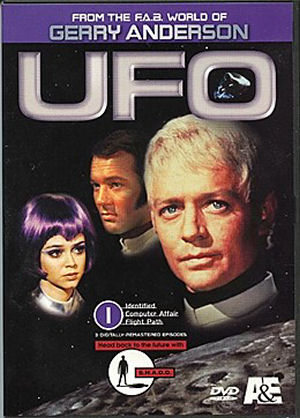 \ \The Complete UFO Megaset on DVD - AMAZON UFO is a British
television science fiction series created by Gerry
Anderson and Sylvia Anderson and produced by the
Anderson's and Lew Grade's Century 21 Productions
for Grade's ITC Entertainment company. The Andersons
had previously made a number of very successful
marionette-based children's science fiction series
including Stingray, Thunderbirds, and Captain
Scarlet. They had also made one live-action science
fiction movie, Doppelgänger, also known as Journey
to the Far Side of the Sun, and now felt ready to
move into live-action television and aim at a more
adult market.
UFO was the Andersons' first totally live-action TV series. Despite the assumption of many TV station executives, the series was not aimed at children, but deliberately sought an older audience; many episodes featured adult themes such as adultery, divorce, and drug use. UFO first aired in the UK in 1970 and in US syndication over the next two years. In all, 26 episodes, including the pilot, were filmed over the course of more than a year, with a five-month production break caused by the ultimate closure of the MGM-British Studios in Borehamwood, where the show was initially made. It is currently airing in the US in remastered HD on Voom HD Networks' Family Room HD. An idiosyncrasy of the series is that the term "UFO" is pronounced as a word ("you-foh"), as suggested by the real-world originator of the term Edward J. Ruppelt, and not as the more common "you-eff-oh". This is particularly true of the lead character, Ed Straker. Technically speaking the series title should properly be pronounced "you-foh" as well. However, the "you-foh" pronunciation was not consistently applied and some supporting characters use the more traditional form. In a sad coincidence, lead actors Ed Bishop and Michael Billington died in June 2005, within five days of each other. Plot overview
The show's basic premise is that in the near future –a fictional version of 1980 (a date indicated in the opening credits) – human beings are being covertly harvested for their organs by aliens UFOs The extraterrestrial spacecraft can readily cross the vast distances between their planet and ours, but are only large enough for one or two crewmembers. Their time on station is limited; UFOs can only survive for a couple of days in the Earth's atmosphere before they heat up, deteriorate, and finally explode. The alien craft can survive for far longer underwater, however; one episode deals with the discovery of a secret undersea alien base. In flight they are surrounded by horizontally-spinning vanes and emit a distinctive pulsing electronic whine (actually produced by series composer Barry Gray on an Ondes Martenot). The craft is armed with a laser-type weapon, but can be destroyed by conventional explosives. The personal arms of the aliens resemble shiny assault rifles; these have a lower rate of fire than that used by SHADO. |
||||||||||
Gabrielle Drake - Lt. Ellis
|
||||||||||
| Aliens
Notably for science fiction, and uniquely for a television series, the alien race is never given a proper name, either by themselves or by human beings; they are simply referred to as "the aliens." Humanoid in appearance, the autopsy of the first alien captured reveals that they are harvesting organs from the bodies of abducted humans. Their faces are stained by the hue of a green oxygenated liquid which is believed to cushion their lungs against the extreme acceleration of interstellar flight; this liquid is contained in their space helmets. To protect their eyes the aliens wear opaque sclera contact lenses with small pinholes for vision. The show's opening sequence begins by showing the image, remarkable for its time, of the removal of one of these contact lenses from an obviously real eye with a pair of forceps — although the scleral lens is never shown actually in contact with the eye. SHADO To defend against the aliens, a secret organisation called SHADO (Supreme Headquarters Alien Defence Organisation) is established. Operating behind the cover of the Harlington-Straker Studios movie studio in England, SHADO is headed by Commander Ed Straker (played by Ed Bishop), a former United States Air Force Colonel and astronaut who poses as the studio's chief executive. In reality, this was a cost-saving move by the producers — the studio was the actual studio where the series was being filmed, originally the MGM-British Studios, later Pinewood Studios, although the Harlington-Straker studio office block seen throughout the series was actually Neptune House - a building at the former British National Studios, in Borehamwood, that were owned by ATV. Pinewood's studio buildings and streetscapes were used extensively in later episodes, particularly "Timelash" and "Mindbender", the latter featuring scenes that actually showed the behind-the-scenes workings of the UFO sets when Straker briefly finds himself hallucinating that he is an actor on a TV series and all his SHADO colleagues are likewise actors. Typical of Anderson productions, the studio-as-cover idea was both practical and cost-effective for the production and provided a ready-made for the viewer's suspension of disbelief. It removed the need to build an expensive exterior set for the SHADO base and combined that all-important "secret" cover (concealment and secrecy are always central themes in Anderson dramas) with the trademark ring of at least nominal plausibility. A studio was a business where unusual events and routines would not be remarkable or even noticed. Comings and goings at odd times, the movement of vehicles, equipment, people and materiel would not excite undue interest and could easily be explained away as "sets", "props", or "extras". Another Anderson leitmotif was the concept of the mechanical conveyor — e.g., the automatic boarding tubes of Stingray and the Thunderbird craft. In UFO, this appeared in the guise of Straker's "secret" office, which doubled as a lift (elevator) that takes him down to the SHADO control centre located beneath the studio. The pilots of the Interceptors slide down a boarding tube into the craft. After the tube retracts the Interceptor is raised from the hanger on a platform the actual launch pad being disguised as a lunar crater. SHADO equipment SHADO has a variety of high-tech hardware and vehicles at its disposal to implement a layered defence of Earth. Early warning of alien attack would come from SID (Space Intruder Detector), a computerised tracking satellite that constantly scans for UFO incursions. The forward line of defence is MoonBase from which the three Lunar Interceptor spacecraft from which nuclear missiles are launched. The second line of defence includes SkyDiver, a submarine mated with the submersible, undersea-launched Sky One interceptor aircraft which would attack UFOs in earth atmosphere. The last line of defence is ground units including the armed, IFV-like SHADO Mobiles, fitted with caterpillar tracks. Special effects, as in all Anderson's marionette shows, were supervised by Derek Meddings, while the vehicles were designed by Meddings and his assistant, Michael Trim. The stories The show's concept was very dark for its time — the basic premise was that the alien invaders were abducting humans to use as involuntary organ transplant donors. A later episode, "The Cat with Ten Lives", contains a particularly sinister plot point which suggests that the UFO pilots are not humanoid aliens at all, but are in fact human abductees under the control of the alien intelligences. This suggests that the aliens may have no physical being themselves and therefore need a vehicle or container, meaning our human bodies, to incarnate. The show also featured realistic, believable relationships between the human characters to a far greater extent than usual in a typical science fiction series, showing the clear influence of American programmes like The Twilight Zone and Star Trek and British action series such as Danger Man. One early episode, "The Computer Affair", strongly hinted at an interracial romance between two continuing characters (something that was uncommon on British TV in those days), while others showed the heroes making mistakes with sometimes fatal consequences. Furthermore, relatively few episodes of the series actually had happy or (for the characters) satisfying endings. One especially dramatic episode "Confetti Check A-OK" is almost entirely devoted to the breakdown of Straker's marriage under the strain of maintaining his secret identity. Another, "A Question of Priorities" hinges on Straker having to make an agonising life-or-death choice — to rescue his critically-injured son by diverting an aircraft carrying SHADO mobiles to deliver life-saving medical supplies, or to attempt a last-chance intercept against an incoming UFO. Interestingly, two key images from "A Question of Priorities", Straker's son being struck down and his ex declaring she never wants to see Straker again, are repeated in "Sub-Smash" and "Mind-Bender", suggested Straker remains haunted by unresolved emotions to the series end and perhaps beyond. Another episode "The Square Triangle" includes a plot by a woman and her lover to murder her husband. When they accidentally kill an alien from a downed UFO instead, SHADO intervenes and doses the guilty pair with amnesia drugs (decades ahead of a similar story device in Men in Black, and one deployed for similar reasons). Straker realises, however, that the drugs will not affect their basic motivation. The end credits of this episode feature a very dark scene set in the future with the woman visiting her husband's grave, and then walking to meet her lover. Some critics complained that the emphasis on down-to-earth relationships weakened the show's science fiction premise and were also a means of saving money on special effects. The money-saving argument may have been true to a limited extent, but the Andersons made a virtue of necessity. They had always hoped to direct live action TV drama, and although the marionette shows helped them develop impressive skills in effects and scripting, they had always considered them as essentially being a way of keeping in work and earning money while they tried to break into "real" TV drama. Others countered that the characters were more well-rounded than in other science fiction shows and that science fiction concepts and special effects in themselves did not preclude realistic action and interaction and believable, emotionally engaging plots. UFO confused
broadcasters in both Britain and the United States
who could not decide if it was a programme for
adults, or for children (the fact Anderson was
primarily associated with children's programming did
not help matters). This confusion — coupled with
erratic broadcasts — are considered as contributing
factors in its cancellation, although UFO is
credited with opening the door to moderately
successful runs of later live-action, adult-oriented
programming by Anderson such as The Protectors and
Space: 1999.
Special effects The special effects, supervised by Derek Meddings, were of the highest quality and outstanding for their day, given the relatively limited resources at the team's disposal. In a refinement of the underwater effect developed for Stingray, Meddings' team devised a disconcerting effect — a double-walled visor for the alien space helmets which could be gradually filled from the bottom up with green-dyed water. When filmed from the appropriate angle it produced a very convincing illusion of the helmet filling up and submerging the alien's head. After the 26 episodes were completed plans were drawn up for a sequel to be called UFO: 1999 which would have been set in a much bigger Moonbase. A subplot of the episode "Kill Straker!" sees Straker negotiating with SHADO's financial supporters for funding to build more moonbases within 10 years, which could be seen as a prologue to the Space: 1999 concept. When American broadcasters dropped their support for a second season of UFO, the idea was dropped, but a couple of years later the concept was revised into an even more far-fetched story about the moon being blown out of orbit and Moonbase along with it — Space: 1999. When Space:1999 was broadcast there was no trace in its plot of the show which had been its precursor. As with many Anderson productions, the series generated a range of merchandising toys based on the SHADO vehicles. The classic Dinky die-cast range of vehicles featured robust yet finely-finished products and included Straker's futuristic gull-winged gas turbine car, the SHADO mobile and the missile-bearing Lunar Interceptor (though the Interceptor was released in a lurid metallic green finish unlike the original's white). Like the Thunderbirds and Captain Scarlet related models, the original Dinky toys are now prized collectors items. All the major vehicles, characters, and more have been produced in model form many times over by a large number of licencee companies; the Anderson shows and their merchandise have always had widespread popularity, but they are especially popular in Japan. The complete series has been released on DVD in the UK and in North America and was finally released in Australia on 5 September 2007, after many years of being promised "next year". Bonus features include a commentary by Anderson on the pilot episode "Identified", and an actor's commentary by Bishop on the episode "Sub-smash". There are also some deleted scenes and lots of stills and publicity artwork. Characters UFO had a large
ensemble cast, and many of its members would come
and go during the course of the series, with a
number of actors — most notably George Sewell and
Gabrielle Drake — leaving the series during the
production break that occurred when the series had
to change studios midway through production. It is
established early on that SHADO personnel rotate
between positions, so the occasional disappearance
of characters — some of whom would later return in
other positions — fits in with the concept of the
series. Also, due to the scheduling of the series
which did not reflect the production order, some
episodes featuring departed cast members were not
actually aired until late in the series, giving the
impression that no major cast changes occurred.
Among the major actors, only Ed Bishop appeared in
all episodes. These are the major recurring
characters in the series:
Comm. Ed Straker (Ed Bishop) A former American Air Force pilot and astronaut originally from Boston who organized SHADO following a series of UFO attacks in 1970. Straker masquerades as the head of Harlington-Straker Film Studios, SHADO Headquarters being located directly below the studio. He was married to Mary Nightingale in 1970, but they soon divorced after the birth of John, their son. (Timeframes are never given for events before the series, but it would be reasonable to presume that their marriage had ended by the end of the flashback presented in "Confetti Check A-OK"). As if perhaps to show her opinion of Straker and his cold attitude, Mary would register their son as John Rutland, after his new stepfather Steven Rutland (played by Philip Madoc). John was later seriously injured when he was hit by a car and Straker, against his own rules, used a SHADO aircraft in order to fly in antibiotic drugs from America. When his second-in-command, Col, Freeman, diverted the plane in order to investigate some curious UFO-related events in Ireland, pride prevented Straker from informing and overruling him as to the plane's original mission. The drugs arrived too late at the hospital and John died ("A Question of Priorities"). One consistent
element of Straker's character is that he refuses to
drink alcohol even though he has a fully stocked bar
in his SHADO office. An early episode refers to him
possessing the willpower to avoid alcohol, which
suggests that he was once an alcoholic. Straker
suffers from claustrophobia, a fact known only to
the SHADO doctors and Alec Freeman, and the major
plot device of "Sub-Smash."
Col. Paul Foster (Michael Billington) Former test pilot whose plane was critically damaged when SHADO's Sky 1 intercepted and destroyed a UFO in close proximity to Foster's jet. His subsequent persistent investigation of the incident threatened to expose SHADO's existence and Straker considered having him killed, but instead was impressed enough with Foster to offer him a position with SHADO. Foster appears to be somewhat of a protégé of Straker's, as he is shown in a number of major positions. He is Moonbase Commander for a time (substituting for Lt. Ellis), is assigned to Skydiver for several months, and also receives a position of authority at SHADO HQ. He masquerades as one of Straker's film producers in the studio and enjoyed a brief relationship with Col. Virginia Lake. Foster has the unique distinction of having once actually befriended one of the aliens, though he was unable to prevent the creature from being killed by SHADO personnel; his overall demeanor became noticeably more cynical after this event (chronicled in the episode "Survival"). Lt. Gay Ellis
(Gabrielle Drake)
Gabrielle Drake - Lt. Ellis
Most often seen as Moonbase Commander during the first half of the series, Lt. Ellis is occasionally portrayed as lacking self-confidence, and at other times as a take-charge officer. She is briefly reassigned to SHADO HQ when it is suggested that she may be romantically involved with Interceptor pilot Mark Bradley ("The Computer Affair"). She also appears to be attracted to Ed Straker, though nothing comes of this. Col. Alec Freeman (George Sewell) SHADO's first officer until about the three-quarter point in the series (when Sewell left following the change of studios). A lady's man in his early 40s, Freeman is Straker's right hand man and, occasionally, his muscle. Everybody's pal at SHADO, Freeman takes a sardonic attitude towards some of the things Straker and SHADO must do to survive, and at least once submitted his resignation in protest over a decision ("The Computer Affair"). Straker's closest friend and best man at his wedding, Freeman was the very first operative recruited into SHADO. Gen. James Henderson (Grant Taylor) Straker's superior officer, Henderson heads the International Astrophysical Commission, which is a front for SHADO and is responsible for obtaining funds and equipment from government in order to keep SHADO operational. Straker and Henderson butt heads frequently over the needs of SHADO and economic realities. Col. Virginia Lake (Wanda Ventham) Virginia Lake first appears in the pilot episode of the series, as a SHADO scientist and prospective romantic conquest for Alec Freeman. During the last quarter of the season, Lake returns to the series to, ironically, take over the post of SHADO first officer, replacing Freeman. A computer specialist, she also served as Moonbase commander. She was romantically involved with Paul Foster for a time. She initially has a somewhat tense working relationship with Straker, though by the end of the series they appear to have grown close and she is seen comforting him in the final scene of the final episode. Capt. Peter Carlin (Peter Gordeno) During the first half of the series, Carlin is the commander of the submarine Skydiver and pilot of its interceptor aircraft, Sky 1. In 1970, Carlin and his sister found a UFO and were attacked; he was shot and wounded and his sister vanished. He joined SHADO in hopes of finding out what happened to his sister, and eventually learned that her organs had been harvested ("Identified"). Lt. Nina Barry (Dolores Mantez) One of Straker's first recruits into SHADO, Barry works as a tracker at Moonbase and later replaces Lt. Ellis as its commanding officer; she also serves aboard Skydiver at one point. One of several women attracted to Straker, she is the second most frequently appearing character in the series, appearing in 23 of 26 episodes. Capt. Lew Waterman (Gary Myers) Initially an Interceptor pilot on the Moon, Waterman is later promoted to captain and replaces Peter Carlin as commanding officer of Skydiver and pilot of Sky 1. He becomes a very close friend of Paul Foster's. Lt. Keith Ford (Keith Alexander) Former television interviewer who became a founding member of SHADO and its main communications officer. Actor Keith Alexander left the series after the production break, so the character disappears at the 2/3 mark of the series. Lt. Ayshea Johnson (Ayshea Brough) A SHADO headquarters officer in most episodes. Initially seen doing miscellaneous tasks –stationed at a computer console, she's the woman seen turning in her seat to smile and wave at an (offscreen) Col. Alec Freeman in the opening credits– she later becomes SHADO's communications officer following the departure of Lt. Ford. In her final appearance, she is stationed at MoonBase. Highly observant, she provides crucial information in the episode "The Cat with Ten Lives." NB: this character's full name is conjecture. In the credits she is identified only as Ayshea (as is the actress). Dr. Doug Jackson (Vladek Sheybal) SHADO psychiatrist and science officer. A somewhat sinister-looking figure who sometimes appears to have his own agenda, Jackson serves a number of capacities within SHADO, including acting as prosecution officer during the court martial of Paul Foster. When Foster escapes custody after being found (falsely) guilty, Jackson successfully convinces General Henderson to have his guards use tranquilizer darts in their pursuit, rather than shooting to kill. It is implied that Doug Jackson is not the character's birth name, as he speaks with a strong Eastern European accent. His origins, however, are never explored. Lt. Joan Harrington (Antonia Ellis) Another Moonbase UFO tracker, Harrington appears to have a dislike for Lt. Ellis. Miss Ealand (Norma Ronald) SHADO operative masquerading as Straker's movie studio secretary. She is the first line of defence against anyone entering SHADO HQ via Straker's office/elevator. The character is not seen in most of the post-studio change episodes, being replaced in two episodes by a Miss Holland (played by Lois Maxwell). Lt. Mark Bradley (Harry Baird) Caribbean-born Interceptor pilot based on the Moon. He becomes romantically involved with Lt. Ellis for a time, leading to a temporary assignment at SHADO HQ on Earth, and later briefly assumes the position of MoonBase Commander. Baird left the series midway through the season. Minor characters One of the unnamed female MoonBase operatives was played by Shakira Baksh, who later married actor Michael Caine. Producer Gerry Anderson later said that he had lost his temper with her so badly on the set of UFO, that he always feared the idea of running into Michael Caine at some actors' function, and being punched in the nose by him.[1] |
||||||||||
BRITISH CULT SERIES "UFO" HEADING TO THE BIG SCREEN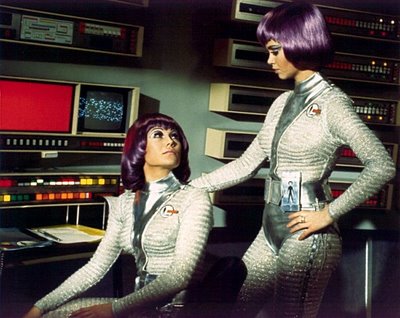 Special effects expert Matthew Gratzner will fulfill his dream of directing a big screen version of the 1970s British TV series UFO, which centers on a top secret agency hidden beneath a Hollywood movie studio that battles space aliens who seek to abduct humans to use their body parts. Gerry Anderson produced the original series. Joshua Jackson will top-line as the film's central character Paul Foster. Gratzner promises that the script will be character-driven and not just an excuse to use special effects - SOURCE U.F.O.- Lt. Gay Ellis - Moonbase
Gabrielle Drake - Lt. Ellis
|
||||||||||
Look of the show
Predictions UFO, which was filmed in 1969 and 1970, made a number of predictions about what life in the 1980s would be like, some of which have (to an extent) come true. Among the innovations predicted by the series: * Car telephones
(a.k.a. cell phones) |
||||||||||
|
SHADO UNIFORMS
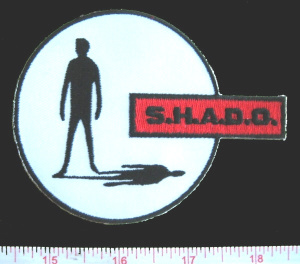
|
||||||||||
|
||||||||||
|
||||||||||
|
||||||||||
| FAIR USE NOTICE: This page contains copyrighted material the use of which has not been specifically authorized by the copyright owner. Pegasus Research Consortium distributes this material without profit to those who have expressed a prior interest in receiving the included information for research and educational purposes. We believe this constitutes a fair use of any such copyrighted material as provided for in 17 U.S.C § 107. If you wish to use copyrighted material from this site for purposes of your own that go beyond fair use, you must obtain permission from the copyright owner. | ||||||||||
|
|









